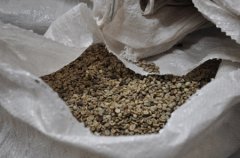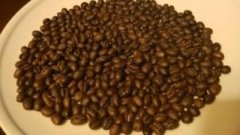An introduction to the origin of coffee-- Coffee cultivation in the Galapagos Islands
Coffee is grown in Saint Crstóbal. San Cristobal is one of the larger islands in the Galapagos Islands and the only island in the archipelago with sufficient fresh water. At an altitude of 410 metres, there is a small lake called El Junco, which forms streams along the rocks and volcanic rocks on the southern slope of the island. Fresh water rich in minerals nourishes the soil of San Cristobal, keeping it permanently moist and fertile.

In 1875, Ecuador's indigenous Mauel J. Cobos planted about 100 hectares of arabic bourbon coffee trees in the Hacienda El Cafetal in San Cristobal. The altitude of the plantation is between 140 and 275 meters, and the climate of the region is equivalent to that of 910-1830 meters inland. This gradient is very suitable for the growth of very hard coffee beans (SHB) with high acidity and is also the key to the quality of coffee.
As the world's coffee industry moves toward a mass-production model, San Cristobal's smaller and less reliable coffee industry is in trouble and may eventually be forced to give up without profit.
In the early 1990s, however, the Gonzalez family bought Hassenda Coffee Plantation. Local microclimates caused by the Humboldt Current, intense equatorial sunlight and sharp temperature variations (43 ° C at sea level and 10 - 16 ° C at 275 m above sea level) provided the unique favourable conditions that prompted the Gonzalez family to expand coffee plantations.
Important Notice :
前街咖啡 FrontStreet Coffee has moved to new addredd:
FrontStreet Coffee Address: 315,Donghua East Road,GuangZhou
Tel:020 38364473
- Prev

Introduction of Coffee Bean producing areas-- Cuban Fine Coffee beans and Cuban Coffee grown in the Caribbean
Cuba is famous for producing sugar, tobacco and coffee, which was introduced from Haiti by the French in the mid-18th century. According to the size of coffee beans, the grades are divided into ETL (Super), TL (Intermediate) and AL (ordinary). The coffee beans produced in Cuba are rich in texture and have a strong smoky taste. In Cuba, the cultivation of coffee is regulated by the state. The best coffee growing area in Cuba
- Next

Introduction of Guatemalan Fine Coffee characteristics of Guatemalan Coffee
Guatemala is bordered by Mexico to the north, Honduras and El Salvador to the south, the Caribbean to the east and the Pacific Ocean to the west, with tropical rain forests, volcanic geology, plateau valleys and changeable microclimate. The average elevation of dangerous countries is high, with coffee belts distributed over 1500 meters and between 14 and 16 degrees north latitude, it is easiest to grow extremely hard beans, all of which are washed, 45% of which are washed.
Related
- Does Rose Summer choose Blue, Green or Red? Detailed explanation of Rose Summer Coffee plots and Classification in Panamanian Jade Manor
- What is the difference between the origin, producing area, processing plant, cooperative and manor of coffee beans?
- How fine does the espresso powder fit? how to grind the espresso?
- Sca coffee roasting degree color card coffee roasting degree 8 roasting color values what do you mean?
- The practice of lattes: how to make lattes at home
- Introduction to Indonesian Fine Coffee beans-- Java Coffee producing area of Indonesian Arabica Coffee
- How much will the flavor of light and medium roasted rose summer be expressed? What baking level is rose summer suitable for?
- Introduction to the characteristics of washing, sun-drying or wet-planing coffee commonly used in Mantenin, Indonesia
- Price characteristics of Arabica Coffee Bean Starbucks introduction to Manning Coffee Bean Taste producing area Variety Manor
- What is the authentic Yega flavor? What are the flavor characteristics of the really excellent Yejasuffi coffee beans?

